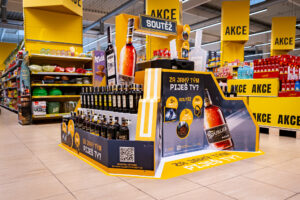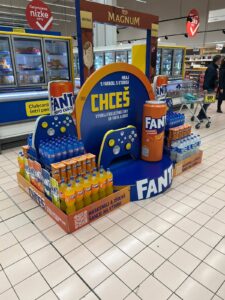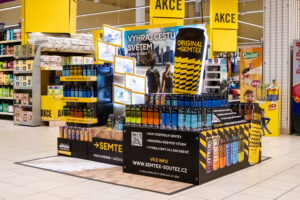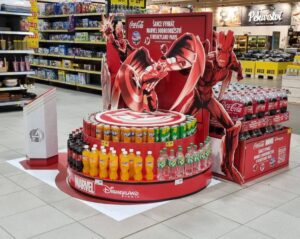This year´s retail Trade Fair EuroShop showed that shopping is not just about getting goods anymore. Experiences customers are getting from a physical contact with a brand and products become the key role of shopping with more and more obvious ubiquity of modern technologies. An experiential shopping is today´s phenomenon associated with the generation change of the purchasing power. Surprising people and wow effects are becoming essential parts of a modern store as they can exceed customer´s expectations and fix an essence of brands in their hearts through analog and digital channels. Today´s stores, therefore, do not manage with simply exposing goods. Brands must try to make customers to enjoy spending their time nearby, offer them experiences, adventure, pamper them, expand their knowledge or refine their taste, offer them things they would not imagine themselves, thanks to which they enjoy something new or otherwise improve their lives.
In connection with the incredible selection on the Internet, which people have available all the time through their smartphones, stone stores must also change into a place of expert consultations. Shop assistants, as experts, will help with selection, expand the possibility of customer´s needs and become customer´s guide in their world of a relevant product inspiration. In this context, there is coming in a new phenomenon of curated shopping based on detecting and meaningfully satisfying existing and potential needs of customers. In connection with the incredible selection on the Internet, which people have available all the time through their smartphones, stone stores must also change into a place of expert consultations. Shop assistants, as experts, will help with selection, expand the possibility of customer´s needs and become customer´s guide in their world of a relevant product inspiration. In this context, there is coming in a new phenomenon of curated shopping based on detecting and meaningfully satisfying existing and potential needs of customers.
“Retailers should let their creativity run riot, but at the same time remain honest with themselves. It is necessary they do only what they really are, which should be materialized, among others, by selection of colors and materials,” said Jasmijn Prinssen from the company JosDeVries at the Trade Fair. The company PME Legend can be an example of good practice, as it based its image on the style of American pilots getting into all selling channels – in stone stores, it uses aviation symbols, including lights, cans, pictures of pilots or metal shelves, while on the Internet it works with stories of pilots. “Even in the online environment, you can offer fun to the visitors, but in stone stores, it is mainly about showing that you respect customers,” added Marcus Remark, the Manager of Centro Oberhausen, with the fact that this brand values should be described as detailed as possible when selling its goods.
Exhibitors in the spheres such as design, light application, movement or projection showed all kinds of details to play with. The trend is increasingly intense combination of digital technologies with the analog classics, use of robots, holograms or augmented reality. For the first time, there was also the application of Artificial Intelligence at the Trade Fair.
Combination of digital technologies and analog classics
Linking modern technologies with analog world has been offered every step in the instore design hall where a store was realized as a place of tricking senses combining lights, shapes, traditional and digital materials. There were displayed barrels, in which fire was burning and steam was rising, both achieved thanks to believable effects using LED and projections, stand in the form of square with fake cobblestones, statue and lamps or imitation of the famous Neptune Fountain in Rome as detailed as possible made of the unexpected material – cardboard. The moment of surprise strengthened by multi-sensoric experience was always guaranteed.
But the highlight of the Trade Fair was a realistic hologram in action projecting 3D image into the air. Its content was simply controlled online via WiFi:
Imaginary second position of the Trade Fair hero won the automatic machine Maggi for recipes, which, after entering the selection of desired ingredients via its touch screen, offers a possible recipe to a customer, prints it and indicates the necessary products of the Maggi brand, which can be bought directly from the display and also other ingredients necessary to cook the selected dish.
An interesting trend of this year´s trade fair was so called farming directly at the point of sale in form of greenhouse with carousel deployment, where it is possible to grow vegetables, herbs or flowers 365 days a year without pesticides and herbicides. Customers can buy them freshly harvested or they can even harvest them themselves. One advantage is also significant water saving (up to 90 %) as well as lower carbon footprint.
Possibilities of projections and lighting got a lot of space. LED display systems were placed on sides, toppers or shelves, their content dynamically and remotely programmed and managed. LED RGB systems were hidden inside inflatable promo tables, where they changed intensity, color or frequency of lighting as necessary. Likewise, LCD applications and projections expanded. We could see for example dynamic projection on a surface of cubes, in a circular aquarium incorporated into the Captain Nemo ship or in the place of classic posters, simplifying content updates. Curved projection screens intensified the atmosphere of the point of sale.
Projections were partially substituted by models. Plastic dummies were replaced by their digital counterparts, which could be rotated from all angles on giant projection walls of a store. The same content is then simultaneously used in a retailer´s e-shop. Or it is possible to project chosen colors and patterns directly on the selected product, e.g. a shirt or shoes, using the Smartpixel technology.
Robots, augmented reality, levitating objects and Artificial Intelligence at the scene
At EuroShop, there literally proliferated robots as shop assistants. Some of them were communicating, gesturing, they answered questions and responded so realistically and influentially, so it gave us the shivers.
Also the use of augmented reality offers better contact with products. For example when buying home appliances or furniture, you can easily place selected product directly into your home interior via an application and consider, whether it suits there or other color would be better. Or it is possible to integrate the augmented reality into shelves, where after picking up certain goods from shelves, there will appear additional information, sample of colors or comments from discussion forums.
For the first time at EuroShop, there was presented an Artificial Intelligence (AI) application in retail. It was used in video systems, in which it managed to detect theft automatically and also analyze visitors according to demographic indicators. Evaluation of behavior using AI is just a presage to more advanced analysis and preparation of personalized communication that is slowly but surely becoming a commonplace.
Microsoft demonstrated Smart Mirror for fitting rooms, which can scan a customer´s figure, check the availability of sizes, colors and variants of selected clothes and order their delivery by a shop assistant. At the same time the mirror offers other products that might fit to the already selected ones. It can also take a picture of the customer in new outfit and offer to share with friends. It also recognizes his/her age and gender and recommends products often tried and bought by others from the same category.
We saw some advance also in the sphere of recognizing products or people. It seems that the necessary interlink in the form of barcodes or QR codes or loyalty cards will gradually disappear. New applications can recognize a product without scanning codes and for instance detects it in e-shop after taking a picture and offers directly to be ordered. Similar systems recognize a concrete person without the need to identify him/her via his/her loyalty card or other tool.
The above described innovations indicate the direction, which, not only, the retail communication would take in the following years, and technological trends that will play a role in it and move further on the way to experience at other levels of physical, digital and online world in the postmodern consumer society, in which it is not only about shopping in stores but it is about enjoying to spend time in it.
Daniel Jesenský DAGO, s.r.o.
Respond to: daniel.jesensky@dago.cz
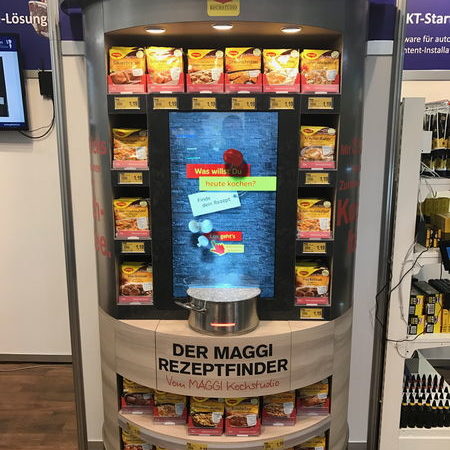

 SK
SK

